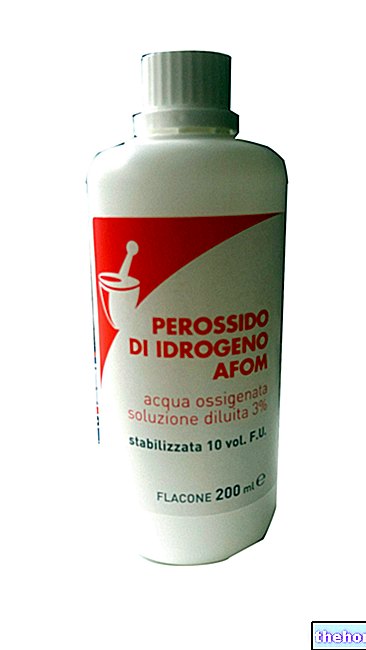
What is Duloxetine Lilly and what is it used for?
Duloxetine Lilly is a medicine indicated for the treatment of adults with:
- major depression;
- pain due to diabetic peripheral neuropathy (affection of the nerve endings in the limbs, which can affect people with diabetes);
- generalized anxiety disorder (chronic anxiety or nervousness about issues related to daily activities).
This medicine contains the active substance duloxetine and is the same as Cymbalta, which is already authorized in the European Union (EU). The company that makes Cymbalta has agreed that its scientific data can be used for Duloxetine Lilly (“informed consent”).
How is Duloxetine Lilly used - Duloxetine?
Duloxetine Lilly is available in the form of gastro-resistant capsules (30 mg and 60 mg). "Gastroresistant" means that the contents of the capsules pass through the stomach without being broken down until it reaches the intestine. This feature prevents the active ingredient from being destroyed by stomach acids. The medicine can only be obtained with a prescription.
In the treatment of major depression, the recommended dosage of Duloxetine Lilly is 60 mg once daily. Therapeutic response is generally seen after 2-4 weeks. In patients who respond to treatment with Duloxetine Lilly, it is recommended to continue treatment for a few months, in order to avoid relapses, or for a longer period of time in the case of patients with a history of repeated depressive episodes. In the treatment of diabetic neuropathic pain, the recommended dose is 60 mg per day, but some patients may need to be given a higher dose of 120 mg per day. Response to treatment should be evaluated regularly. In the treatment of generalized anxiety disorder, the recommended starting dose is 30 mg once daily, but this can be increased to 60, 90 or 120 mg, depending on the patient's response. Most patients should take 60 mg. per day. Patients also experiencing major depression should start with 60 mg once a day. In patients responding to treatment with Duloxetine Lilly, it is recommended that treatment be continued for several months to prevent the disorder from returning. treatment, the dose of Duloxetine Lilly should be gradually reduced
How does Duloxetine Lilly - Duloxetine work?
The active substance in the medicine, duloxetine, is a reuptake inhibitor of serotonin and noradrenaline. It works by preventing the neurotransmitters 5-hydroxytryptamine (also called serotonin) and norepinephrine from being reabsorbed by nerve cells in the brain and spinal cord. Neurotransmitters are chemicals that allow nerve cells to communicate with each other. By blocking their reabsorption, duloxetine increases the number of neurotransmitters in the space between nerve cells, increasing the level of communication between these cells. Since neurotransmitters are involved in maintaining an elevated mood and reducing the sensation of pain, the inhibitory action of duloxetine may help relieve the symptoms of depression, anxiety and neuropathic pain.
What benefit has Duloxetine Lilly - Duloxetine shown during the studies?
For major depression, Duloxetine Lilly was compared with placebo (a dummy treatment) in eight main studies involving a total of 2 544 patients. Of these, six studied the treatment of depression and measured symptom change. over a period of up to six months. The other two studies evaluated the time to return of symptoms in patients who had initially responded to Duloxetine Lilly therapy; the studies included 288 patients with a history of repeated episodes of depression in a period up to five years. Although the results of the depression studies were not uniform, Duloxetine Lilly was more effective than placebo in four of them. In the two studies where the approved dose of Duloxetine Lilly was compared with placebo, Duloxetine Lilly was more effective, and the time it took for symptoms to return was super iore in patients treated with Duloxetine Lilly, compared to those who received a placebo. For the treatment of neuropathic pain, Duloxetine Lilly was compared with placebo in two 12-week studies in 809 diabetic adults. The main measure of effectiveness was the weekly change in pain severity. These studies have shown that Duloxetine Lilly is more effective than placebo in reducing pain. In both studies, pain relief was reported as early as the first week of treatment and for up to 12 weeks.
For the treatment of generalized anxiety disorder, Duloxetine Lilly was compared with placebo in five studies involving a total of 2,337 patients. Four of the studies looked at the treatment of the disorder, measuring symptom reduction after 9- 10 weeks. The fifth study evaluated the time before symptoms returned in 429 patients who had initially responded to Duloxetine Lilly. Duloxetine Lilly was more effective than placebo in treating the disorder and preventing symptoms of recurrence.
What is the risk associated with Duloxetine Lilly - Duloxetine?
The most common side effects with Duloxetine Lilly (which may affect more than 1 in 10 people) are nausea, headache, dry mouth, sleepiness and dizziness. The majority of these undesirable effects were mild to moderate in nature, arose early in the course of therapy and tended to lessen with continued therapy. For the full list of side effects reported with Duloxetine Lilly, see the package leaflet. Duloxetine Lilly should not be used with monoamine oxidase inhibitors (another group of antidepressant medicines), fluvoxamine (another antidepressant medicine) or ciprofloxacin or enoxacin (types of antibiotics). Duloxetine Lilly should not be given to patients with hepatic insufficiency or in subjects with severe renal insufficiency. Therapy is not indicated in patients with uncontrolled hypertension (high blood pressure), due to the risk of hypertensive crisis ( sudden and dangerous rise in blood pressure) For the full list of restrictions, see the package leaflet.
Why has Duloxetine Lilly - Duloxetine been approved?
The Agency's Committee for Medicinal Products for Human Use (CHMP) decided that Duloxetine Lilly's benefits are greater than its risks and recommended that it be approved for use in the EU.
What measures are being taken to ensure the safe and effective use of Duloxetine Lilly - Duloxetine?
A risk management plan has been developed to ensure that Duloxetine Lilly is used as safely as possible. Based on this plan, safety information has been added to the summary of product characteristics and package leaflet for Duloxetine Lilly, including the appropriate precautions to be followed by healthcare professionals and patients. Further information can be found in the summary of the risk management plan.
More information about Duloxetine Lilly - Duloxetine
On 8 December 2014, the European Commission granted a "Marketing Authorization" for Duloxetine Lilly, valid throughout the European Union. For more information on Duloxetine Lilly therapy, please read the package leaflet (enclosed with the EPAR) or consult the doctor or pharmacist. Last update of this summary: 12-2014
The information on Duloxetine Lilly - Duloxetine published on this page may be out of date or incomplete. For a correct use of this information, see the Disclaimer and useful information page.




























